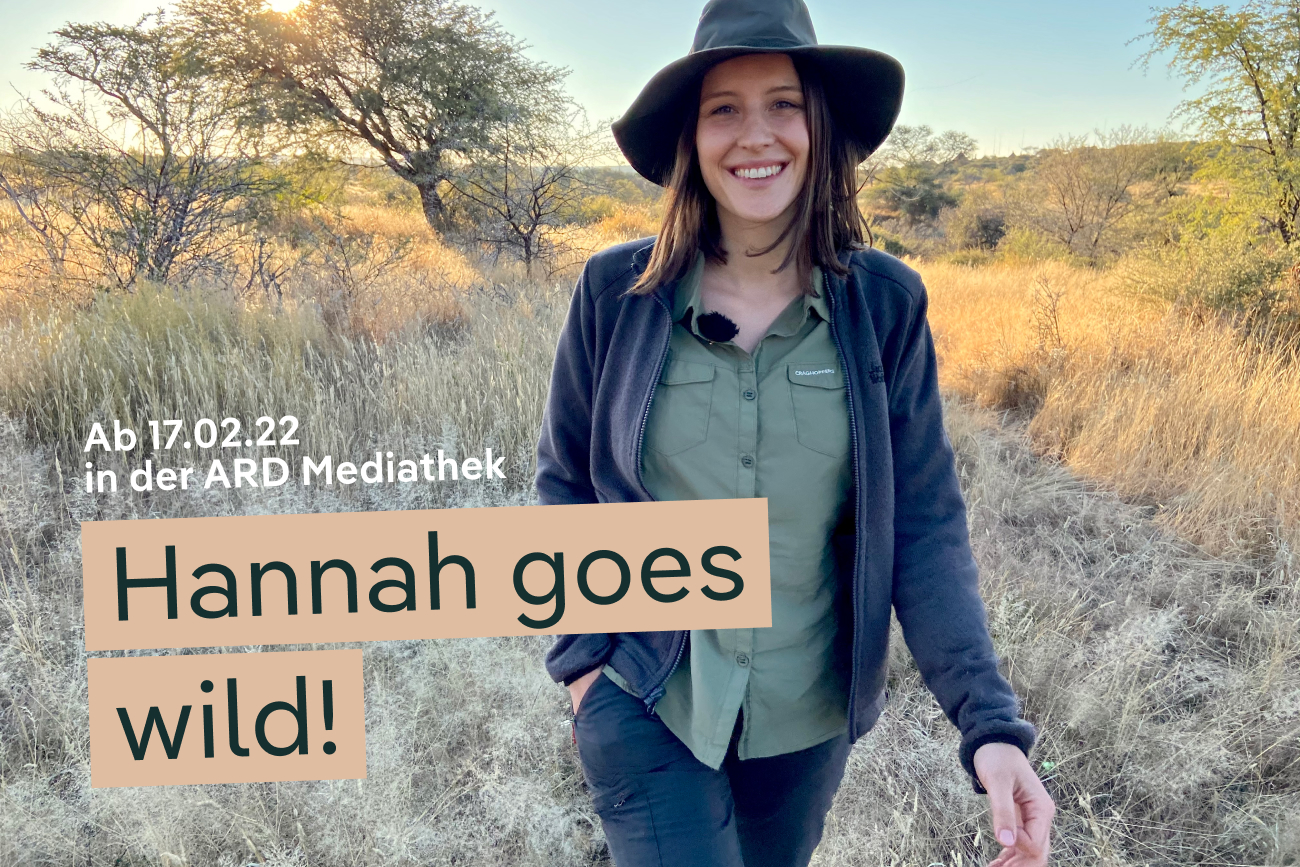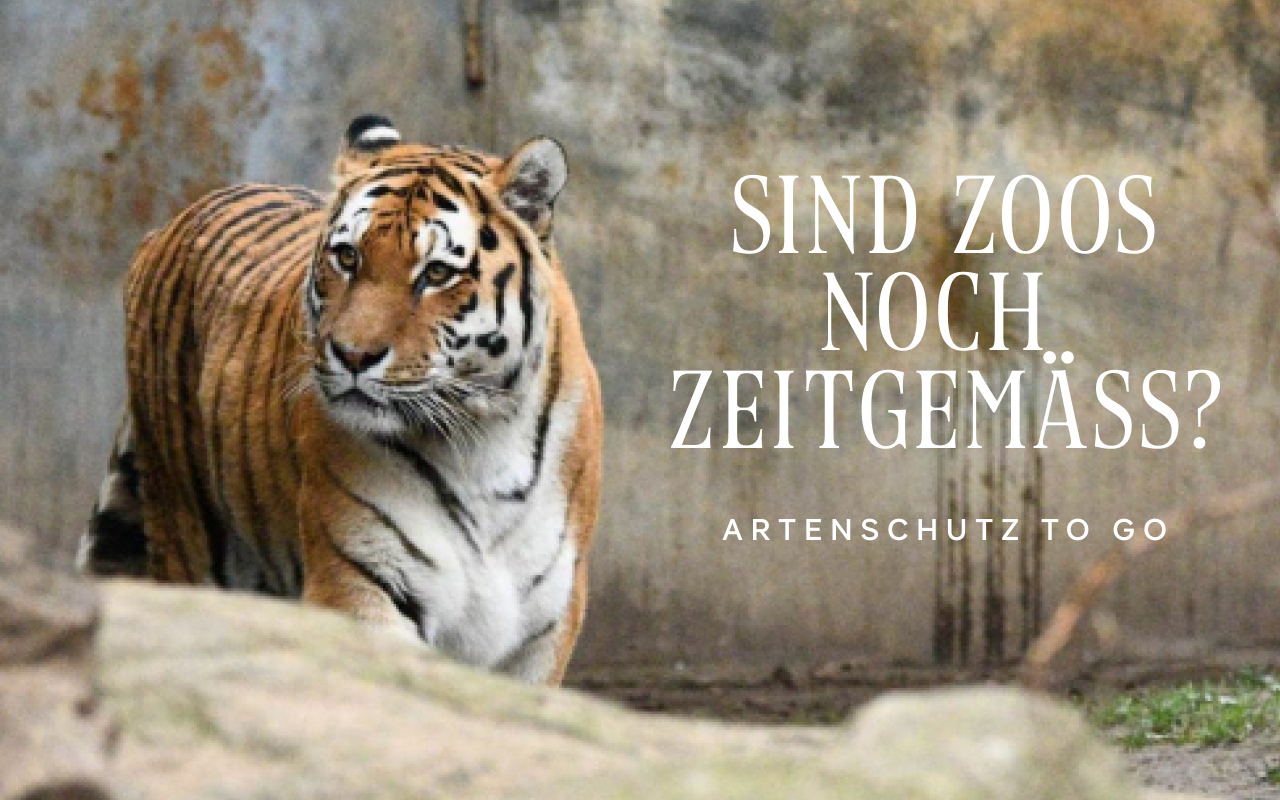
Are zoos still up-to-date?
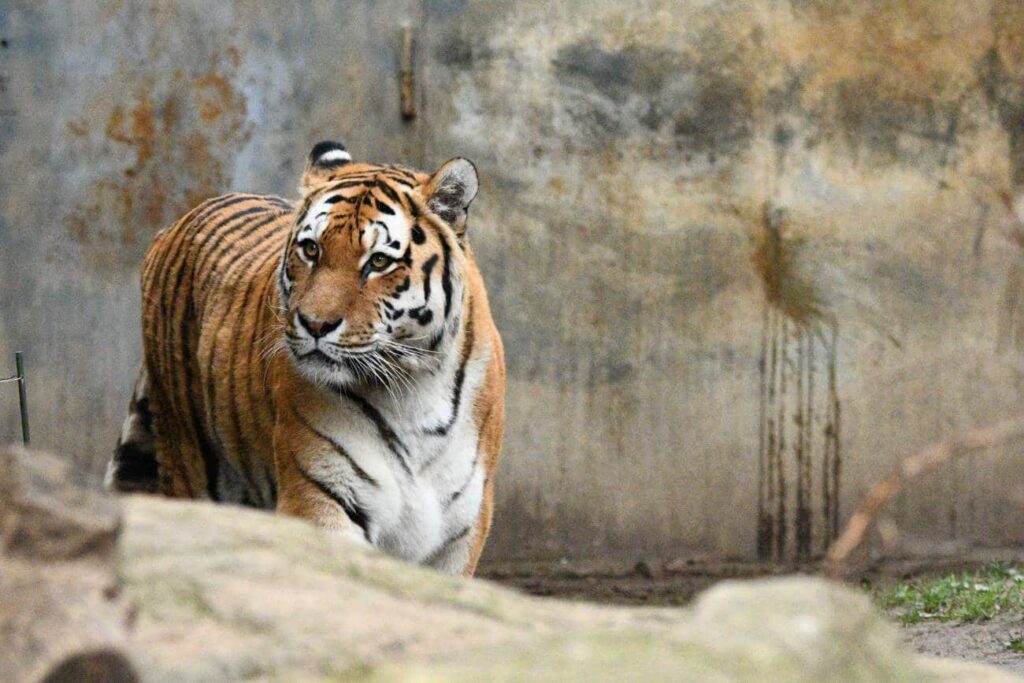
Zoos and large aquariums are controversial issues for many. Therefore, we would like to clarify the situation and try to answer the critical question of whether zoos and aquariums are still relevant today.
Food
for Thought
In 1844, Germany’s first zoo was founded in Berlin. Even then, the focus was on education. Additionally, the aim was to gain scientific knowledge from animal husbandry. However, in order to display the diversity of species as precisely as possible for visitors, zoos became increasingly crowded and the housing for the animals taken from the wild became smaller and smaller.[1]
Species conservation and protection
It was not until the mid-1980s that the first EEPs (European Conservation Breeding Programs) was founded, which now include around 150 animal species.[2] EEPs, to which zoos refer through information panels, are distinguished between “insitu” and “exsitu” programs. Insitu describes the breeding of animals within their natural habitat, which zoos support through endowments and donations or, if necessary, with on-site expertise and manpower. Exsitu means the breeding of animals outside their natural habitat, i.e. reproduction in zoos. To maintain genetic diversity, zoos work closely with each other and keep breeding records. Exsitu programs first serve the purpose of maintaining the current animal population in zoos without the addition of wild animals. Only as a second step is the reintroduction of animals considered. Examples of zoo animals that have been reintroduced into the wild are the forest bustards or the Przewalski’s horses.[3] However, the number of successful projects is very low, due to the habituation of the animals to humans or simply due to a lack of natural habitat.
Environmental Education
The opportunity to look animals directly in the eye and at the same time learn a lot about the massive threats that more and more species face in the wild is something that resonates with people.[4] Many zoos and aquariums therefore now offer very specific advice on what each and every one of us can do in our everyday lives to protect species. The aquarium in Berlin, for example, provides information about the pollution of the world’s oceans by plastic and microplastics, while the Frankfurt Zoo focuses on palm oil, among other things. In addition, there are dedicated zoo schools where even the youngest members of our society can get to grips with these very issues. However, the impact of a visit to the zoo varies. While some go home with new knowledge about endangered animals, others have found the visit to the zoo to be pure entertainment and the educational mission has missed its target.
Research
Zoos are important institutions for many areas of zoology, biology and wildlife medicine. For example, knowledge gained in zoos from reproductive biology can provide assistance in more effectively protecting animal populations in the wild. Likewise, findings from the treatment of sick or injured zoo animals help to be able to examine and treat animals in the wild. “After all, we can only protect what we know,” agrees our chair Hannah Emde.[5]
Animal Welfare
In the wild, animals usually wander through large territories that a zoo cannot provide. However, zoos and aquariums organized within umbrella organizations such as the European Association of Zoos and Aquaria (EAZA for short) have committed themselves to better husbandry standards. These standards include the size and species-appropriate design within enclosures. Increasing the size of enclosures is often achieved – especially in zoos in inner-city locations – by combining enclosures of different species that are compatible with each other. Many zoos have already created savannah landscapes within which, for example, giraffes, zebras, wildebeests and impalas live together. This offers two advantages: It means more activity for the animals by engaging them with animals other than their own kind, and visitors get a slightly better idea of the animals’ natural habitat. In addition, keeping the animals occupied in a species-appropriate setting is important, for example, by modeling foraging on their habits in the wild. In some places, zoos even take on a role as holding pens for animals discovered by customs, often victims of illegal wildlife traffickers.[6]
The well-known conservationist Jane Goodall has formulated yet another thought: “In an ideal world, all animals would live a free life in the wild, safe from human disturbance. The sad truth is that a relatively large proportion of the remaining wild chimpanzees live surrounded by dangers caused by humans. […] In other words, a good zoo as a home for animals may be preferable to living in many places in the wild.”[7] This sounds bitter, but it shows that we need to look at these issues holistically.
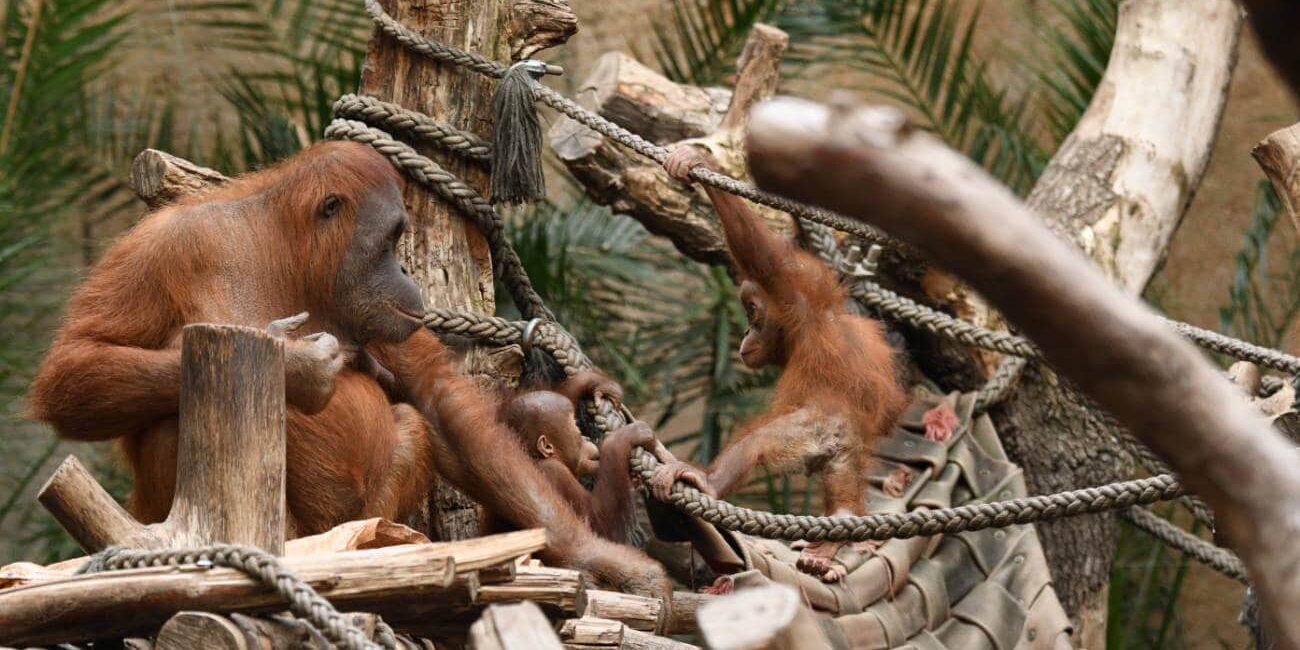
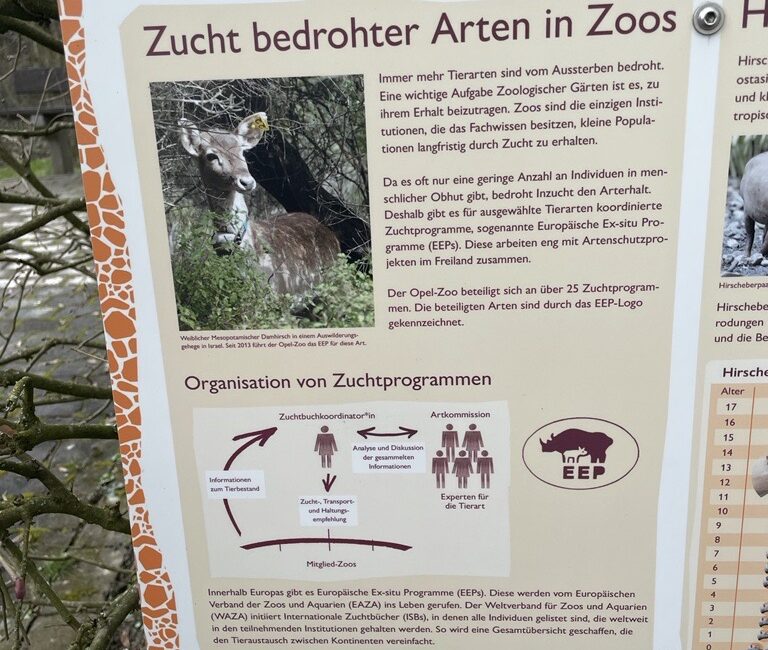
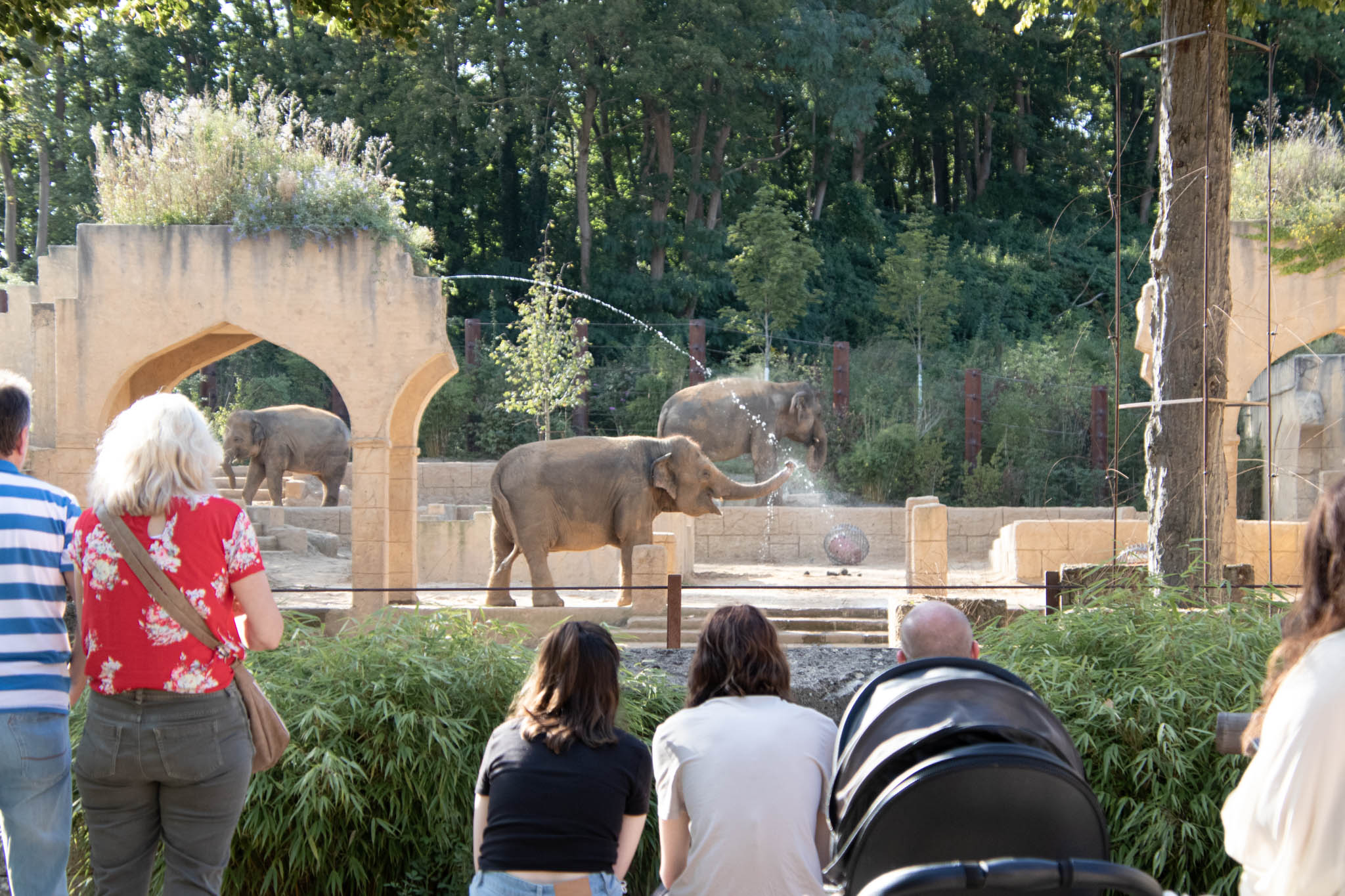
The Price Question
Do environmental education, research and conservation efforts justify the existence of several hundred zoos and aquariums in Germany alone? Some animal welfare organizations, including Peta[8] and marine biologist Robert Marc Lehmann[9], answer this question with a resounding “no.” They often note that zoos’ efforts to reintroduce animals to the wild lag far behind the 150 species that become extinct every day[10] and that financial support for insitu projects is too low.[11] Furthermore, during our research we repeatedly come across evidence that large aquariums and oceanariums in particular still work with wild-caught animals to this day.[12]/[13] Wild-caught animals are something we cannot and do not want to endorse. Likewise, keeping animals in cages that are too small will never be accepted, that much is certain. But many zoos are changing and are focusing on species conservation and protection. But it remains questionable whether it really requires this many zoos. Let’s put it this way: Science-based zoos that focus on animal welfare and species conservation can definitely contribute to the preservation of biodiversity, but poor animal husbandry and catching wild animals instead of releasing them into the wild are definitely no longer acceptable in today’s world.

Takeaways
Zoos are not necessarily all bad. But how do we recognize a good or a bad zoo? There are several ways to do this. For example, you can look very closely at the enclosures. Paying attention to labeling and carefully reading the information about the zoo’s commitment can also be helpful. If necessary, it is also possible to talk to the staff on site. Another indication is membership in an umbrella organization, such as EAZA, since its members have committed themselves to certain standards. If all this is too uncertain for you and you don’t want to continue supporting the work of zoos in the future, you might enjoy visiting a natural history museum or virtual zoos. Our augmented reality app 4Wildlife also makes it possible to experience wilderness – without any real animals at all.
Sources and further information
[1] VdZ: Historie von Zoos und Schauaquarien
[2] Zoo Frankfurt: EEP – Europäisches Erhaltungszuchtprogramm
[3] WDR Theos Tierwelt „Fast ausgestorbene Arten – Kann Auswilderung sie retten?“
[4] Buch Hannah Emde „Abenteuer Artenschutz“, S. 56
[5] Buch Hannah Emde „Abenteuer Artenschutz“, S. 57
[6] Podcast, The Jane Goodall Hopecast, Staffel 1 Episode 10 [7] Jane Goodall Institut: Schimpansen im Zoo
[2] Zoo Frankfurt: EEP – Europäisches Erhaltungszuchtprogramm
[3] WDR Theos Tierwelt „Fast ausgestorbene Arten – Kann Auswilderung sie retten?“
[4] Buch Hannah Emde „Abenteuer Artenschutz“, S. 56
[5] Buch Hannah Emde „Abenteuer Artenschutz“, S. 57
[6] Podcast, The Jane Goodall Hopecast, Staffel 1 Episode 10 [7] Jane Goodall Institut: Schimpansen im Zoo
[8] Peta: Zoos – Gefängnisse für Tiere
[9] Meeresbiologe Robert Marc Lehmann über Zoos
[10] FAZ: WWF – Größtes Artensterben seit Ender der Dinosaurier-Zeit droht
[11] bpb: Ein Ettikettenschwindel
[12] Sharkproject Germany e.V.: Großaquarium Shark City
[13] Podcast „Planet A“ Staffel 2, Folge 23: „Zoos und Aquarien – Wie zeitgemäß sind sie noch?“
[9] Meeresbiologe Robert Marc Lehmann über Zoos
[10] FAZ: WWF – Größtes Artensterben seit Ender der Dinosaurier-Zeit droht
[11] bpb: Ein Ettikettenschwindel
[12] Sharkproject Germany e.V.: Großaquarium Shark City
[13] Podcast „Planet A“ Staffel 2, Folge 23: „Zoos und Aquarien – Wie zeitgemäß sind sie noch?“

Julia Dibiasi
aspiring journalist from the Nepada Wildlife Team
provides inspiration for species protection in everyday life
Our “Artenschutz to go” contributions make no claim to be
completeness, but merely provide inspiration for a more conscious and sustainable use of our planet. Together we can do a lot better, but we can’t do everything perfectly right away. Would you like to share more information on this topic with us? Or
do you have critical comments? Then feel free to drop your comment and start the conversation.
You may also like
New series: “Hannah Goes Wild”
https://www.youtube.com/watch?v=Nd5-l4ZDInk(c) Doclights / NDR Naturfilm From the jungle to the wild
Borneo Gibbon – Last of its kind?
How 48 hours with a two-month-old baby gibbon, no bigger than my forearm, in the jungles of Borneo t
Interview: Does protecting wildlife also protect human health?
The responsibility to our fellow human beings is being heatedly discussed right now in this fourth w



